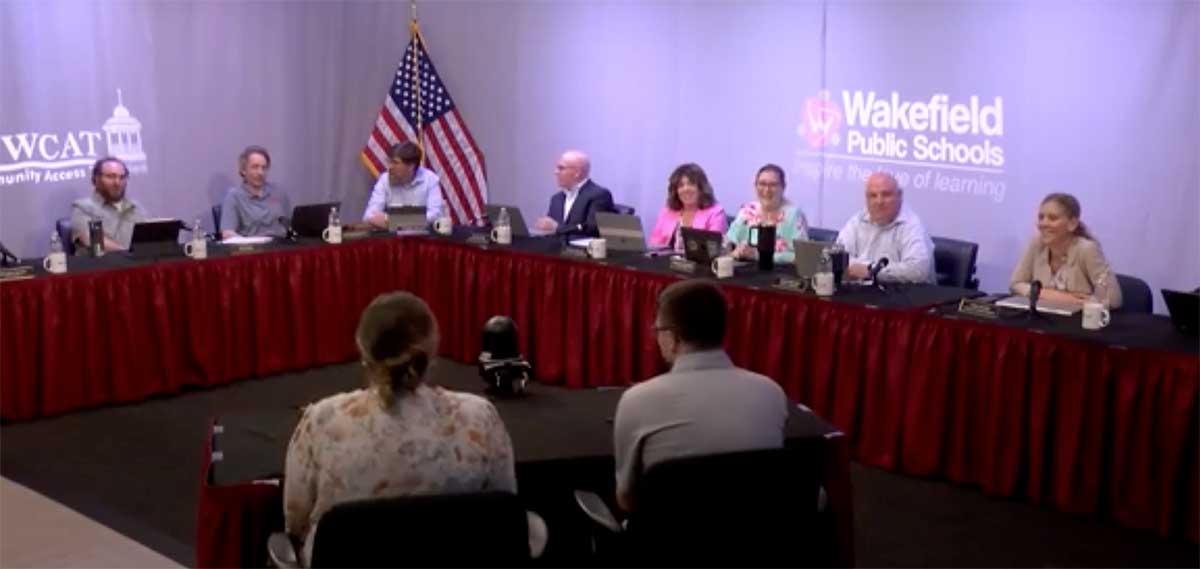By NEIL ZOLOT
WAKEFIELD — Fiscal 2025 started just a few months ago and the school year started less than two months ago, but planning for Fiscal 2026 is already beginning. “It’s that time of year again,” School Department Business Manager Christine Bufagna said at the School Committee meeting Tuesday, October 15.
On December 13, the school superintendent and business office will distribute budget information to school administrators to initiate discussion on priorities and resources to meet them. “The annual budget is the financial framework of the educational program needs of the School Department,” the Budget Development Process memo given to the School Committee members reads. “It mirrors the problems and difficulties confronting the school system.”
In January the leadership teams will make presentations to the School Committee on those items. In late January and early February there will be staff forums and a survey will be distributed to the staff and parents.
The School Committee Finance and Facilities Subcommittees will start to go over figures and a recommendation will be made by February 21.
In early March, the budget will be posted on line and given to the full School Committee. A public hearing is scheduled for March 18 and a School Committee vote March 25.
By April the budget will be given to the Town Council and Finance Committee, with reviews conducted before Town Meeting in May.
Annual cost increases related to Special Education are a yearly issue in the school budget, especially those for out-of-district (OOD) placements. “Is it a function of costs going up or kids being out in different programs?” School Committee member Kevin Fontanella asked Special Education director Rose Galvin.
“Both,” she answered.
Eighteen percent of Wakefield students, totaling 773, have Individual Education Plans. Another 661 are served in the town, 37 outside the district and 22 in private facilities or home-schooled.
There were 36 OODs in Fiscal 2023 and 2024 and currently 35 in Fiscal 2025, but that number could change if SPED or IEP covered students move into Wakefield or if changes are made in student services.
The average cost of OOD tuitions was $75,089 in Fiscal 2023; $84,883 in Fiscal 2024 and calculated at $117,021 in Fiscal 2025.
The range of costs was $24,150-352,940 in Fiscal 2023; $24,150-403,452 in Fiscal 2024 and calculated at $124,114-421,220 in Fiscal 2025.
Total tuition rose from $2.85 million to $3.22 million (13 percent) from Fiscal 2023 to 2024 and is calculated to rise 28 percent to $4.12 million in Fiscal 2025. That dovetails with a rise in tuition at private institutions of 2.54 percent from Fiscal 2022 to 2023 and a jump to a 14 percent increase for Fiscal 2024, which Galvin called “dramatic.”
Circuit Breaker aid helps, but the town has to cover the costs upfront and reimbursed later for only 75 percent of costs above $51,721. Galvin calculated a total tuition and transportation cost of $74,076.92 above the $51,721 would yield $55,557.69 in 75 percent reimbursement. “It’s helpful, but OOD costs are still substantial,” Galvin said.
School Committee member Peter Davis asked her if there is similar aid for in-district students.
Galvin answered there was and involved “complicated math.”
On a more positive note she reported the district is now using new IEP forms from the state Department of Elementary and Secondary Education, which are designed to be more user friendly, include clearer attainable and measurable goals and methods to meet them and encourages collaboration between the school staff, specialists and families in a more holistic approach to meet student needs. “We’d done a lot of training on this last year and are continuing that,” she said.
In recent weeks orientations on the new format have been given at meetings of the town Special Education Parent Advisory Council.






